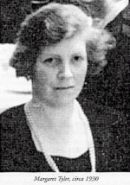In ecchymosis or any form of purpora there is a PSEUDO-PSORIC basis.
Eczema-pustule.
Herpes.
Urticaria.
Hyperidrosis and Bromidrosis.
Anidrosis.
Abscess and ulcers.
Freckles.
Fine, smooth clear skin.
Goose flesh.
(Nat., Murex, Hepar and Silicea good examples).
Abscess and ulcerations after injuries. Bee or bug affect these patients badly, Impetigo.
The patients often have benign or malignant tumours.
In TUBERCULAR and SYPHILITIC patient we see much scarring and increase in cicatricial tissue.
Leprosy.
In the lymphatic temperament we see the malignancies-we find here rich soil for Gonorrhoea and Syphilis. In tubercular patients we have so much difficulty in eradicating acquired syphilis or gonorrhoea.
Gonorrhoea runs to gleety discharge and strictures, pockets and metastasis forms, or we have metastasis to ovaries, broad ligaments, tubes, uterus, rectum, and all such complications. It is the tubercular diathesis that complicates all our skin diseases and makes them so difficult to remove.
Suppress any form of Ringworm and there often follows tubercular diseases. (Burnett)
In Ichthyosis (fish skin) we find all the chronic miasms and where we find them all present, we usually find an incurable skin diseases especially if hereditary.
In Ichthyosis we see the dryness of PSORA, in the squamae of SYPHILIS and often the moles and warty eruptions of sycosis.
All miasms are present in erysipelas -carcinoma- epithelioma- lupus.
In nerves or congenital marking of the skin we have all the miasms as in Elephantiasis.


